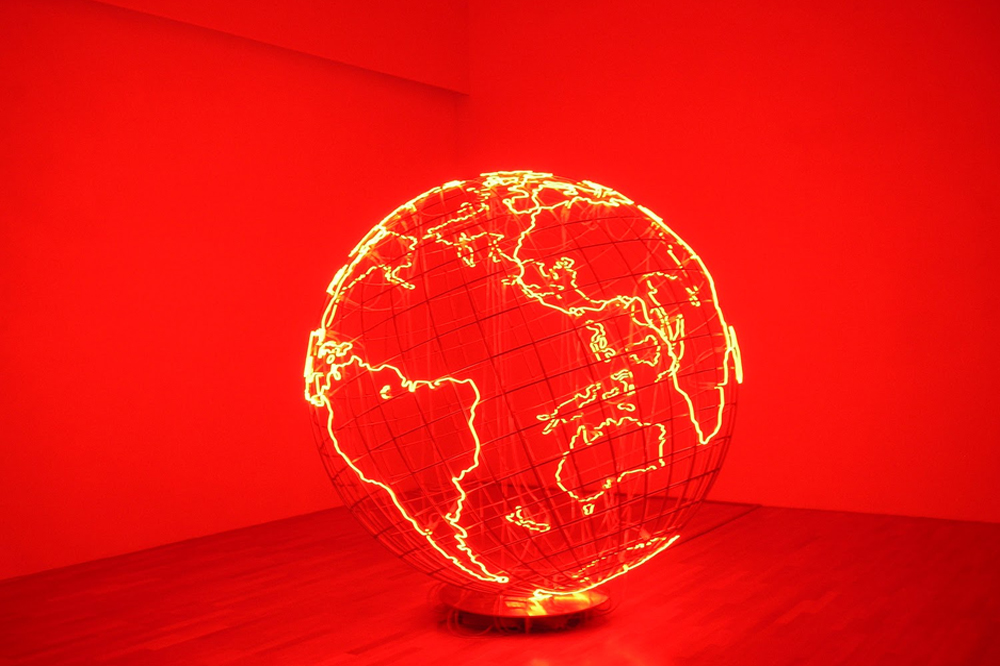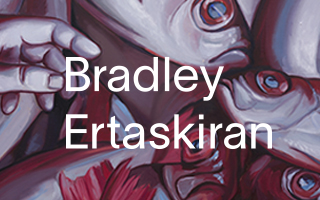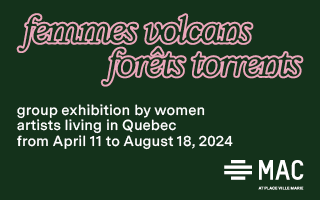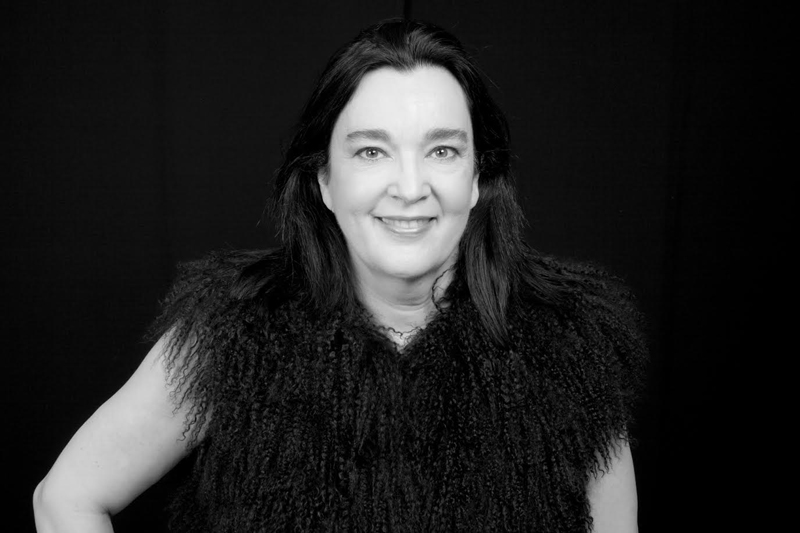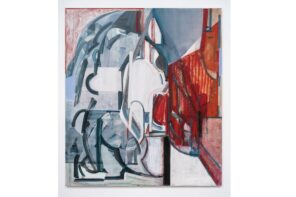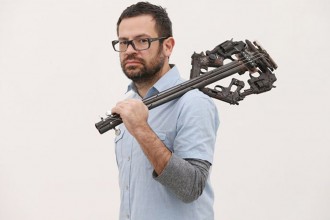There is a bracing moment at the end of my interview with Chantal Pontbriand in early July, where, just as I’m about to leave, she emits with emphasis, “courage! We’re still in need of this, greater courage. Nobody talks about this, but it’s what’s required.”
Five years ago, Pontbriand delivered a lecture on this very subject at the 2010 congress of the international curatorial organization, IKT (the International Association of Curators of Contemporary Art), where she urged her colleagues to address the topic of courage at a site, Athens, that was newly coming to know its value. In her introductory keynote for this conference, Pontbriand outlined her chosen theme as one intended to “fight fear” in a moment of unprecedented economic instability and social aggravation.
It seems telling that this lecture could be presented today and many of its key tenets would not need editing. It also feels important that Pontbriand – a Quebecois curator of international repute who’s called Europe home for the past decade until a recent return to Montreal – was once again urging something forward before the rest of us advanced to meet her. Pontbriand, a curator, writer, and publisher, has the uncanny quality of an intellectual water diviner, one who does not separate art from issues of the economy, socio-political contingencies, and fluidity.
Pontbriand may be best known for her work with PARACHUTE, the contemporary art magazine she founded in 1975, and for which she acted as publisher/editor until 2007. The publication described itself as “a reference to the world of contemporary art,” focusing on progressive themes for each issue (including Digital Screens, Autofictions, and Democracy and Anonymity), with an annual dedication to an “emerging metropolis in the contemporary artworld” (Mexico City, Beirut, Shanghai). Pontbriand’s early attention to the subject and effects of globalization is a signature of her unique ability to look forward, and stake her claim in our production of a future.
Pontbriand has spent the past ten years curating at the Tate Modern (she was appointed head of exhibition research and development in 2010), teaching curatorial studies at the Sorbonne, and producing exhibitions including Yvonne Rainer at the Jeu de Paume and the Palais de Tokyo, Paris; an exhibition titled Photography performs: The Body as the Archive at the Centre de photographie d’Île-de-France; and Mark Lewis at Le Bal. Her recent publications include Mutations, Perspectives on Photography (Steidl/Paris Photo, 2011), and The Contemporary, The Common: Art in A Globalizing World (Sternberg Press, Berlin, 2013).
She sat down to discuss a project-in-the-making, however, one that, for an advancing curator, is appropriately positioned in the after-now. Titled Demo-Graphics, this biennial event is being asserted as an alternative to an “artworld biennial” that will re-position Toronto, and Canada, on the artworld’s roaming map. As artistic director and the curator for its first edition, Pontbriand is working in concert with Asma Mahmood (director/founder of Canadian Community Arts Initiative), Yvonne Singer (associate professor in Visual Arts at York University), and, as advisor, Sarat Maharaj (London, UK-based curator, writer, and professor). Pontbriand discussed the tenets of her proposition in terms both ideological and practical, and placed an emphasis on what it won’t be: another artworld biennial.
(Incidentally, the day after our meeting, a story emerged in the Toronto Star that a Toronto biennial is, in fact, being taken up and, it would appear, being taken seriously. I followed up with Pontbriand to discern if this was a coincidence; she assured me it was. I’ve inserted an emailed question about this issue and its relevance to her project into the interview below.)
What inspired this event for you?
I had been impressed when I read that Toronto was going from 2 million to 7 million, very soon now, and that is profoundly transformative for the city, and it’s becoming a real hub internationally.
Usually cities create biennales to bring the international crowd to the city. But now we will be bringing the international crowd to the international crowd, which is local! [Laughs] The diversity of the demographic composition of the greater Toronto area is mind-boggling, there is no other area of Canada where it’s so complex.
Together with New York and Los Angeles, Toronto is part of the three largest urban economic hubs in North America. So to have a situation that is expanding because of globalization, but in the North American context, it’s really an interesting phenomenon.
The fact that this is happening so quickly in a developed country will create very different effects than what’s happening in Istanbul, Mexico, or São Paulo, for instance.
How are you distinguishing this from a biennial?
Well, by now there’s a format to most biennials. Which is that they’re usually held in a city that wants to attract international attention and wants to be part of the international artworld. They’re usually held in one large venue or two or three smaller venues. And then they’re usually put into the hands of a guest curator who is often foreign, because that seems to sit well with the international agenda. Usually what these curators do is invent a team that is close to their interests, their research, and they pick artists that go with their theme! That is a traditional way of curating, today, which I have always challenged. That is because I favor a pragmatist approach which is really grassroots. My idea is never to impose a vision on the situation but rather to deconstruct that situation in order to structure something different that is maybe underlying in that context and that hasn’t been explored that much, or if we do so, can bring us beyond some of our preconceived ideas or ways of working.
Thinking of an international event that way is very challenging for everyone, including the curator and the artists. So it’s really an exercise in knowledge and an analysis into which we assert lines of creativity. The only thing that is left with regards to the biennial mode is the fact that it’ll be organized every two years. [Laughs]
A recent article in the Toronto Star raised the possibility of a biennial, here, a conversation that’s been recurring with various emphasis and likelihood for a long time in this city. Is it a coincidence that this issue is being taken up at the same time as your event is being initiated? And if so, how would you ideally proceed? Does it change anything for you?
I have just heard about this older project going forward through the newspaper article that appeared a few days ago. It does not change anything so far as the concept for Demo-Graphics is very advanced and articulated with a list of very talented local and international collaborators. We have to get the governmental, institutional, and local voices to work together now. The DNA of Demo-Graphics is DHS: Demography/Hospitality/Sharing. It is also DEMOS – working out the common – and GRAPHIKOS – writing out the common through art practices, following Ancient Greek. I have explored these concepts in relation to contemporary art in my book The Contemporary, The Common: Art in a Globalizing World (2013), which is a collection of essays I have written since 2000. I feel an enormous shift in civilization has happened since then, 2000 is a landmark year for many reasons with regards to the state of the world.
Tell me more about what this is, Demo-Graphics. Will you be pulling in international artists in addition to national / local artists?
Both. The way I see it is that there are really scientific parameters to demography. The results of research and census analysis gives us the different ethnic origins of the population of the Greater Toronto Area. We know that besides the English and the French heritage, there are portions of the population here emerging out of different Asian countries, and then there’s the Filipino component; a bit of African; the Arab world; some people from South America and Latin America, now, especially Mexico and the Caribbean, amongst at least 25 other important groups.
The idea is to search these areas of the world that compose the demographics of the GTA, challenging artists who have developed working methods or visions of the world that are unique, who could show in this context. This does not exclude Europe and North America, nor Canadian artists of Native origin, nor of French and English descent, nor the different European immigrations, such as the Portuguese and Italian populations, that are very present here in the Greater Toronto Area. The idea is to have a great diversity of artists invited from other countries, and have them work here, possibly, if they can afford the time, in situations like public libraries, schools, hospitals, the airport, social clubs, people’s houses. More traditional exhibitions are also possible, as I hope we’ll have the collaboration of the different institutions existing in the area. The AGO, the Power Plant, the university galleries, the Art Gallery of Mississauga, the Oakville Galleries, the Art Gallery of Hamilton – all these institutions could be used to collaborate with Demo-Graphics, for hosting participating artists, whether Canadian or international. There is a wide array of possibilities for making an event that could be meaningful at this point in time, in the local and international – not just art context, but socio-political context as well.
A few practical questions. Are you the founding director? What position do you hold?
Artistic director and curator. I’m orienting the foundational aspects of the event as well as curating the event.
Will that be true every time, your curating this event?
No, I’m doing the first one. Maybe I’ll do two. But I’ll never do more than two. [Laughs] No, I’d like to do two, because I know what it is to put together a new international event. I directed the Festival international de nouvelle danse (FIND) in Montreal, which I co-founded and ran for twenty years. I know the first event is always complex. You don’t know what to expect, you have to put everything together, you’re not working with a regular team yet. It’s all new.
Also I think the first Demo-Graphics event will be about exploring the idea of demographics through contemporary art, but after that it can get more precise, with sub-concepts identified and worked with.
That begins to answer my next question, which is about thematics. You’ve said you don’t want this to feel like a biennial, where a curator directs the discussion with an applied vision or theme – but would you not agree that the very subject of demographics is directing? Is thematic?
No, it’s not directive, on the contrary. Let me compare it to documenta. What does the word “documenta” mean? It means an event that seeks to document the world. In the case of documenta, it was invented after the Second World War to make sense of what was following that major event, and where Germany had lost a lot of international credibility. I don’t think that’s a restrictive agenda, on the contrary. The same with Demo-Graphics. It’s a more precise perspective on world issues today than documenta, which is pretty vague. We have more sophisticated ways of thinking about the world, today, with art, than at the initial time of documenta, when we were still inventing Modernism, and where art was very much still separate from the socio-political context. We have to find a way of addressing the meaningfulness of the current art practices, and to do so I think we have to be a little bit more structured than we normally are in the context of the biennials, where we visit, and where we’re disappointed, and we wonder why we’re disappointed.
There is a higher level of expectation, and an event needs to develop the critical apparatus to address what is going on today. Working through local demographics is a challenge and an inspiration, and reflects the larger world as it is today.
Some might argue that a focus on demographics is a fairly (social) scientific focus, and that much as we are a cosmopolitan and exponentially growing populous, this kind of subject doesn’t bear out good art. How would you respond to these anticipated criticisms?
Yeah. Well I guess this will be the … issue! [Laughs] The problem with cultural studies is that it has justified a lot of content-oriented work that is not necessarily interesting, as a whole, from the point of view of aesthetics. So the challenge is to find artists in the world that have succeeded in being compelling in all dimensions that are relevant. You cannot exclude the formal component, and you cannot exclude the content. It’s how an artist succeeds in dealing with content versus form that is the issue.
Is it your ambition to have the involvement of Canadian versus international participants weighted, in any way? In a discernible percentage, say, where one group is favored over the other?
No, not beforehand. I have a kind of instinct about that. [Laughs] And it’s always worked out. The same thing for the men/women issue.
I also have a kind of understanding of migration and exile, because my father lived for twenty years in the United States, and my grandfather was born in the United States. So I always say I’m Franco-American, as much as a Canadian and Québecoise. I’ve traveled all my life, and lived for ten years in Europe. And I’ve always been involved in creating links between Canada and the international world. For me it’s a mission. [Laughs] I have a kind of compass inside of me that orients me to that kind of endeavor.
How will this be funded?
Like all international events are funded: part state, part private, and part revenues from ticket sales. I know those mechanics very well from the FIND. I’m completely confident that we can find the money in the Greater Toronto Area.
It’s interesting that you’re returning after a long European sojourn to develop something on this scale for Canada. You must have a fresh perspective on how our artworld here has changed, evolved, perhaps deteriorated since you left? Can you reflect on that?
Canada used to be extremely popular in the international art milieu in the 1980s. Curators and museum directors from Europe and the United States were coming all the time because of the fact that the foundation of the Canada Council for the Arts, introduced in the 1950s, was beginning to have its effect by the 1970s. By the ‘80s the word had spread around that Canada had really interesting artists and art spaces. Also, these art spaces, starting in the ‘70s, were bringing in European and American artists – luminary ones. Canada was very hospitable to new work, new kinds of work, more than the States, at the time. All of that made Canada a very mythic place that everyone wanted to visit.
Then in the ‘90s we lost our place because curators in the international art crowd were attracted to China, South America, the Middle East. By the year 2000, institutions like the Tate Modern and the MoMA felt they had to participate in this globalizing world in which we were participating, and it left Canada out. And we’re still mostly out.
We have to do something major in order to be back in, and I feel this is a good time. I think artists, as well as people in institutions, curators, in Canada, now, there’s a stronger spirit here, a more outreaching spirit.
It’s a comfortable country, it’s very easy to spend your life here and never go out of it. Spend your life teaching, exhibiting from now to then, and that’s the end of it. But the artworld doesn’t function like that anymore. And the funding system cannot support that quantity of artists that there are in Canada and that our excellent art schools have produced. We have to get an international art movement, a back-and-forth rhythm, going. And it’s not by doing a biennial that we’ll do that. It’s by creating a unique event that will talk to the world! There’s over 200 biennials. Why would someone come to Canada to see yet another biennial? We need to make something acute, connective, researched, about a globalizing world, and how can Canada contribute to that in an original fashion. It can do so because of its unique demography.
It’s the only G8 country with 20% immigrant population. In the US, 12%. Germany, France, and the UK are all beneath 10%. That’s why I think it’s very powerful to analyze our unique demography – without ignoring our founding peoples in this country – but by finding a new way of looking at our own past, and at our present, and at our future.

